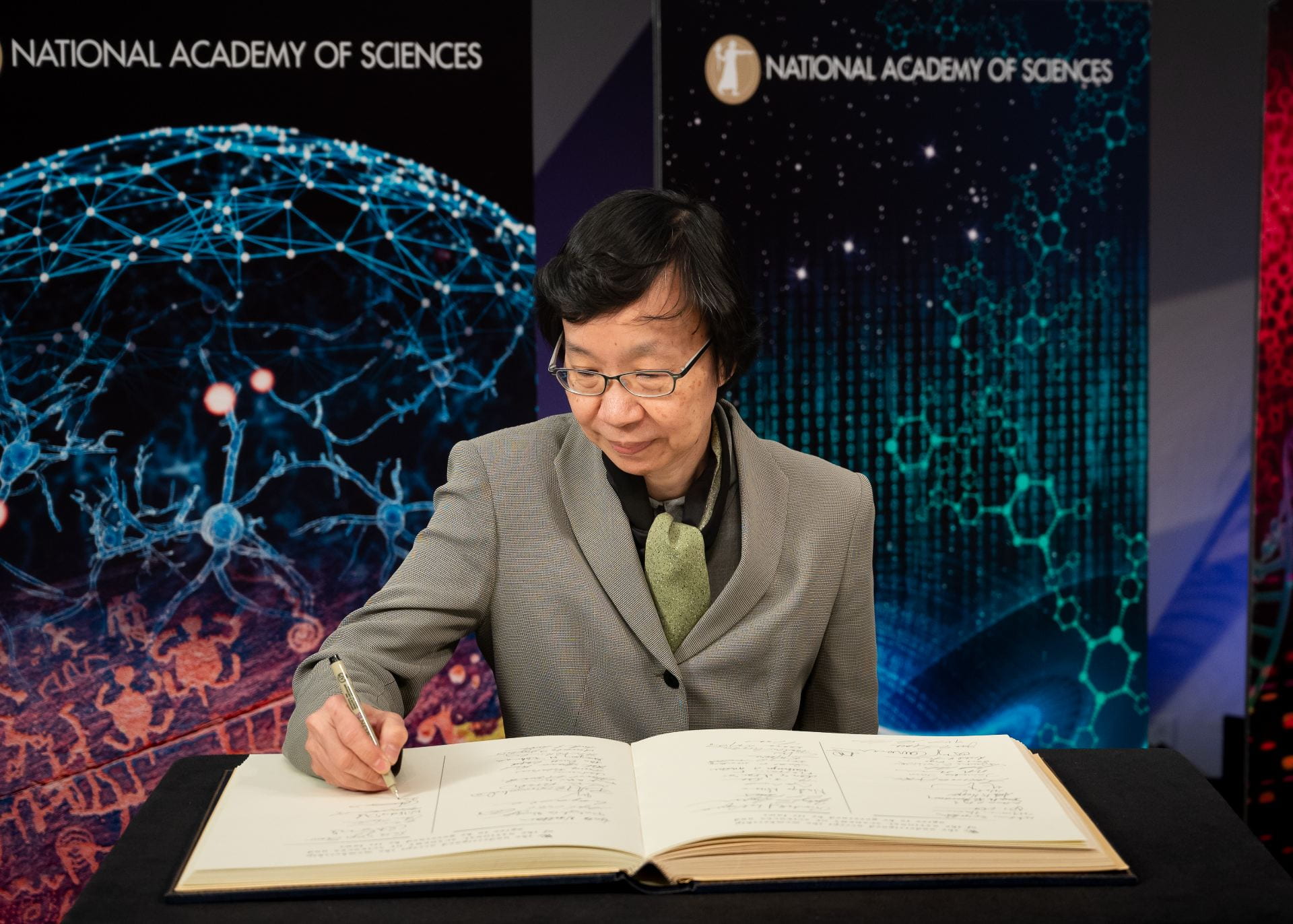Developmental Neurobiologist named to National Academy of Sciences
April 26, 2021

Department of Biological Structure
The Department of Biological Structure proudly announced Dr. Rachel Wong’s election to the National Academy of Sciences on April 26th, 2021, one of the highest accolades any scientist can hope to receive. For those of you in the department who are not too familiar with Rachel’s achievements, this is a great moment to sample some of Rachel’s greatest hits.
As a young physicist, Rachel began her training in Visual Neuroscience under the graduate mentorship of leaders of this field, Abbie Hughes, Bill Levick, and Geoff Henry, at the ANU (the prestigious Australian National University in Canberra). After relocating to the National Vision Research Institute in Melbourne, working with Hughes and David Vaney, a pioneer in the study of retinal cell types and their connections, she obtained a C.J. Martin postdoctoral fellowship to train with one of the greatest Neuroscientists, Carla Shatz, then at Stanford University. There she joined forces with another great leader in the vision field (Denis Baylor) and his then star postdoctoral fellow, (Markus Meister) and published in 1991 an amazing and seminal Article in Science, titled: “Synchronous bursts of action potentials in ganglion cells of the developing mammalian retina”. Like all great scientific discoveries, Rachel and colleagues used a brand new method – an array of electrodes to record from many cells simultaneously – to measure something previously unseen – at a specific time in development neurons fired spikes in synchronous bursts that traveled across the retina! These “retinal waves” as they would soon be dubbed charged the imagination of developmental neurobiologists who had cut their teeth on the concept of the “critical period” in development and hoped to find evidence for the dictum that “cells the fired together wired together”. This paper created a new research domain, focused on the activity-dependent specification of neural circuit development.
Rachel crossed the ocean again and worked with David Vaney as R.D. Wright Fellow at the Vision, Touch and Hearing Research Center, led by Jack Pettigrew. She then moved to a new faculty position at one of the oldest and most prestigious Neuroscience departments in the country at Washington University, St. Louis. There she followed her passion for studying retinal circuit development, by working with amazing colleagues, Josh Sanes, Jeff Lichtman, Ann Marie Craig and Peter Lukasiewicz, developing new methods to figure out how circuitry wires up so very precisely, the sine qua non of a neural system. She pioneered ‘live cell imaging’ of the developing retina by creating new ways to directly visualize how a neuron’s dendrites develop and choose their synaptic mates. One approach called “DioListics”, which emerged from a collaboration with Lichtman’s group, took the gene gun used for shooting plasmids into the nucleus and turned it into a powerful new tool for labeling developing neurons in dozens of fluorescing colors so that their development could be better tracked for the first time. Delivery of calcium dyes with this method also revealed local intracellular calcium activity at new contact sites, which stabilized the growing dendrites of neurons (Lohmann, Myhr, & Wong, Nature 2002).
Rachel made the round trip back to the west coast in 2006, setting up shop in Biological Structure where she continued her work on the developing retina and has expanded her program to address how damaged neural systems can regenerate precise connectivity, combining work on zebrafish, mouse, monkey and human retina in new and diverse collaborations. Her lab discovered unexpected activity-dependent strategies that shape the connectivity of developing retinal neurons (Kerschensteiner, Morgan, Parker, Lewis, & Wong, Nature 2009).
In another study, Rachel and her colleagues, after engineering the deployment of the new arena of neural “connectomics”, probed how the extremely specialized circuits for precise vision develop in the human retina. At UW, Rachel Wong has trained a few generations of truly outstanding fellows and graduate students, most notably, Daniel Kerschensteiner, Joshua Morgan and Felice Dunn who continue to create new ways of seeing neurons develop, riding Rachel’s wave.
by Dennis Dacey | May 2, 2021
Categories: National Academy of Sciences, Awards & Honors
